CS194-26 Project 4a: Mosaic
Overview
In this project, I used perspective warp to warp images onto the a different plane, thereby rectifying them or stitching images from different angles together. This is done by finding the homography matrix using point correspondances, and warping images onto different spaces.
Images that I took
Here are the images that I took that are going to be used in this assignment.
 Left of the bench
Left of the bench
 Right of the bench
Right of the bench
 My shelf
My shelf
 My hangers
My hangers
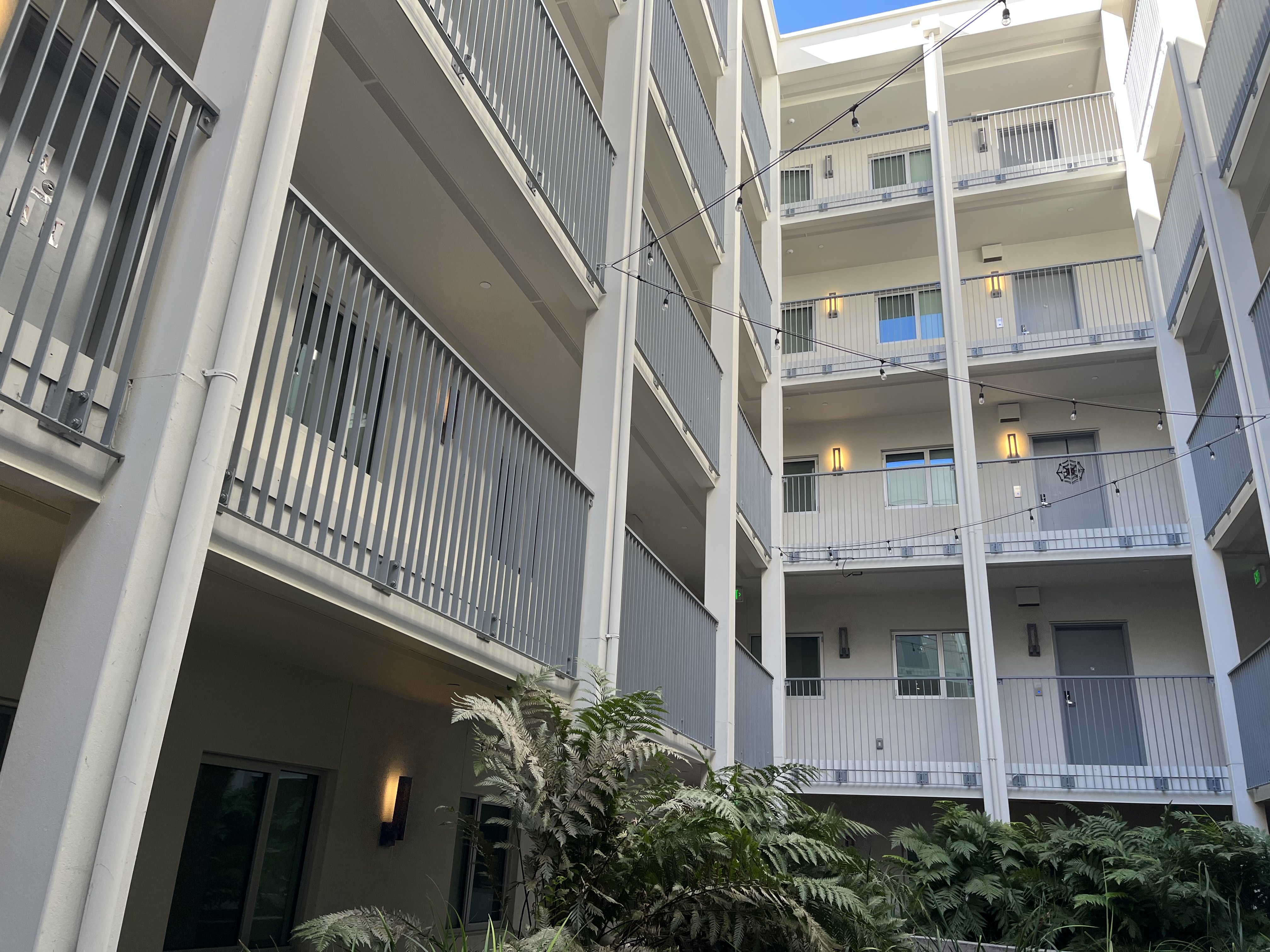 Left side of courtyard
Left side of courtyard
 Right side of courtyard
Right side of courtyard
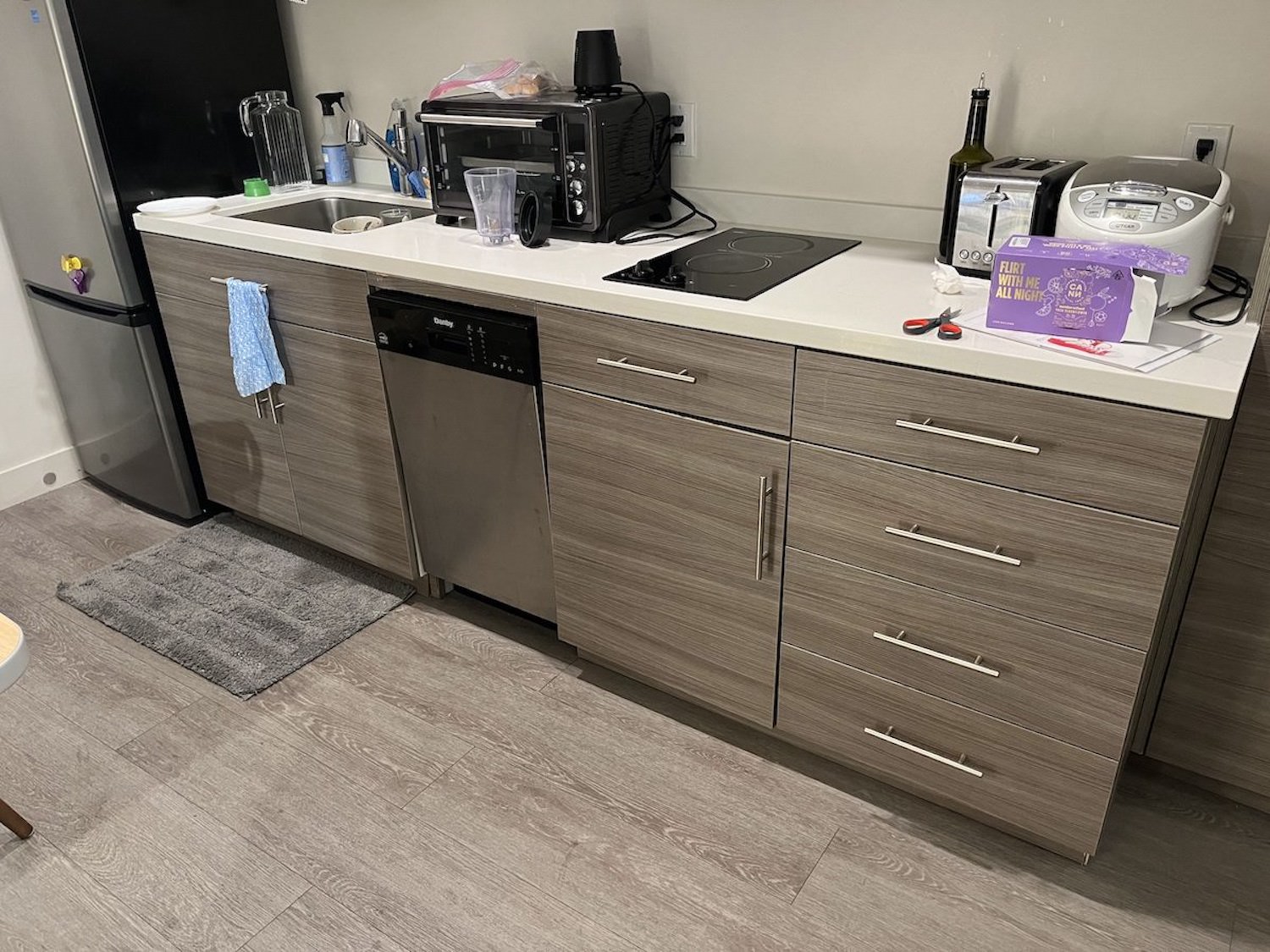 Left side of shelf
Left side of shelf
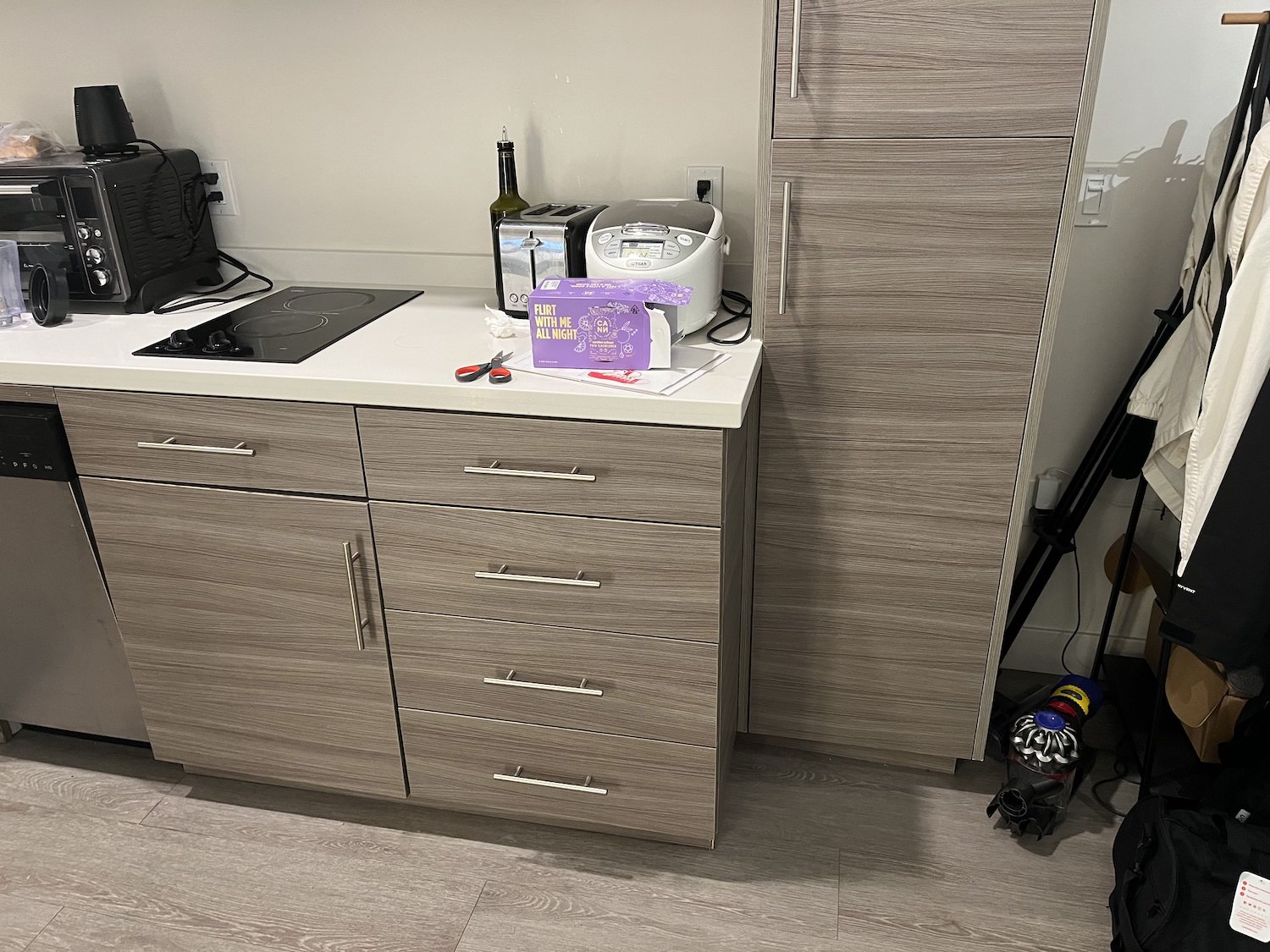 Right side of shelf
Right side of shelf
Recovering homographies
I first wrote the function for recovering the homography matrix from point correspondences. We have this equation for the matrix:
I selected at least 4 points for each image and then solved H using this setup with the help of the np.linalg least squares function.
Warping Image
Rectifying images
I then tried to rectify some images to frontal-parallel view. They're rectangles or parallel lines, whose are point correspondences are basically chosen based on common sense rather than from another image. Only 4 keypoints were chosen for each image with satisfying results.
The first one is the shelf that's viewed from an angle, and then rectified into front view, an actualt rectangle in the image.
 My shelf
My shelf
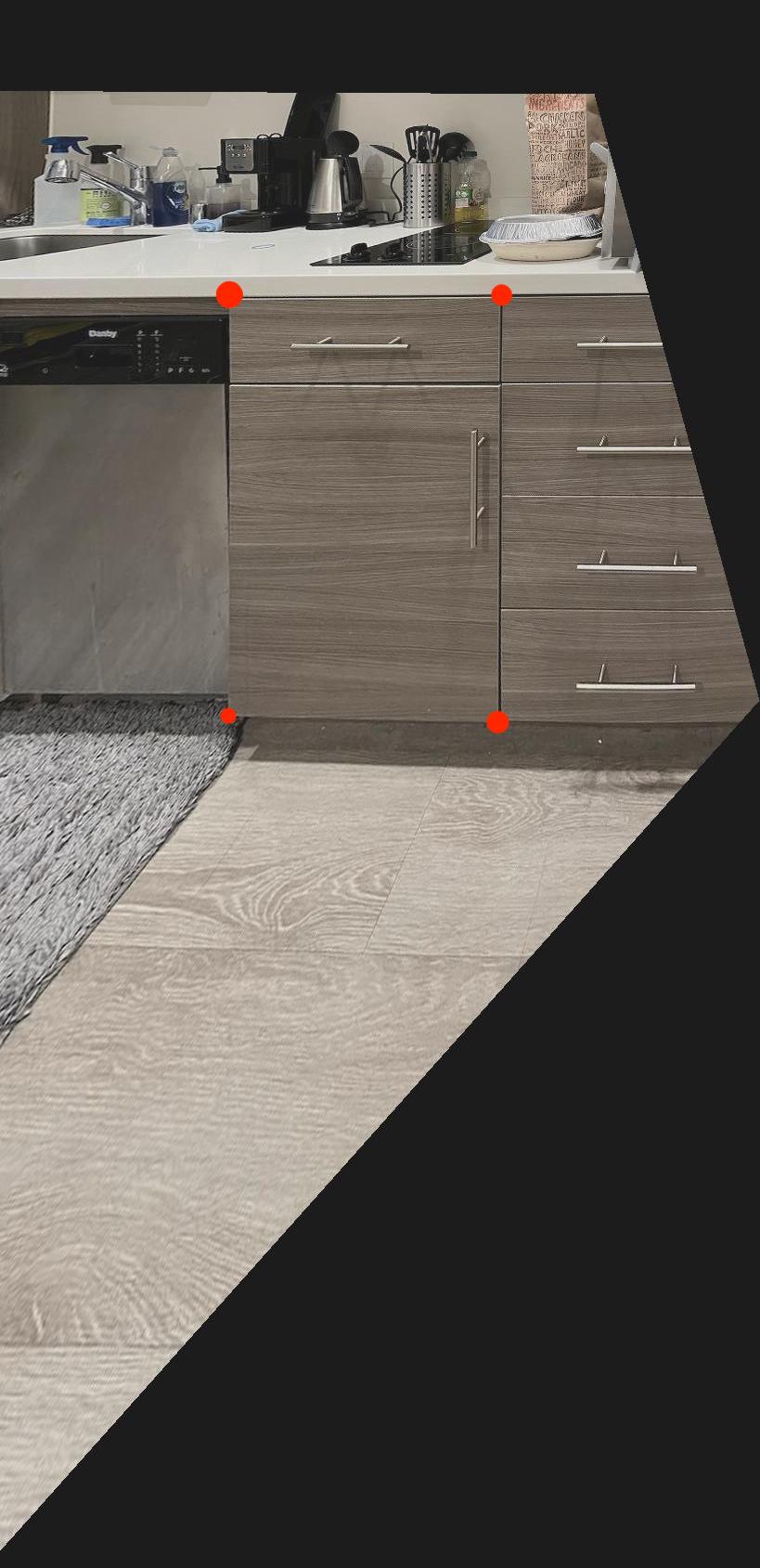 My shelf rectified
My shelf rectified
The second one is my hanger which has supposedly parallel lines but view from the side. In the rectified image, the lines are parallel in the image, like viewed from the front.
 Parallel lines on my hangers
Parallel lines on my hangers
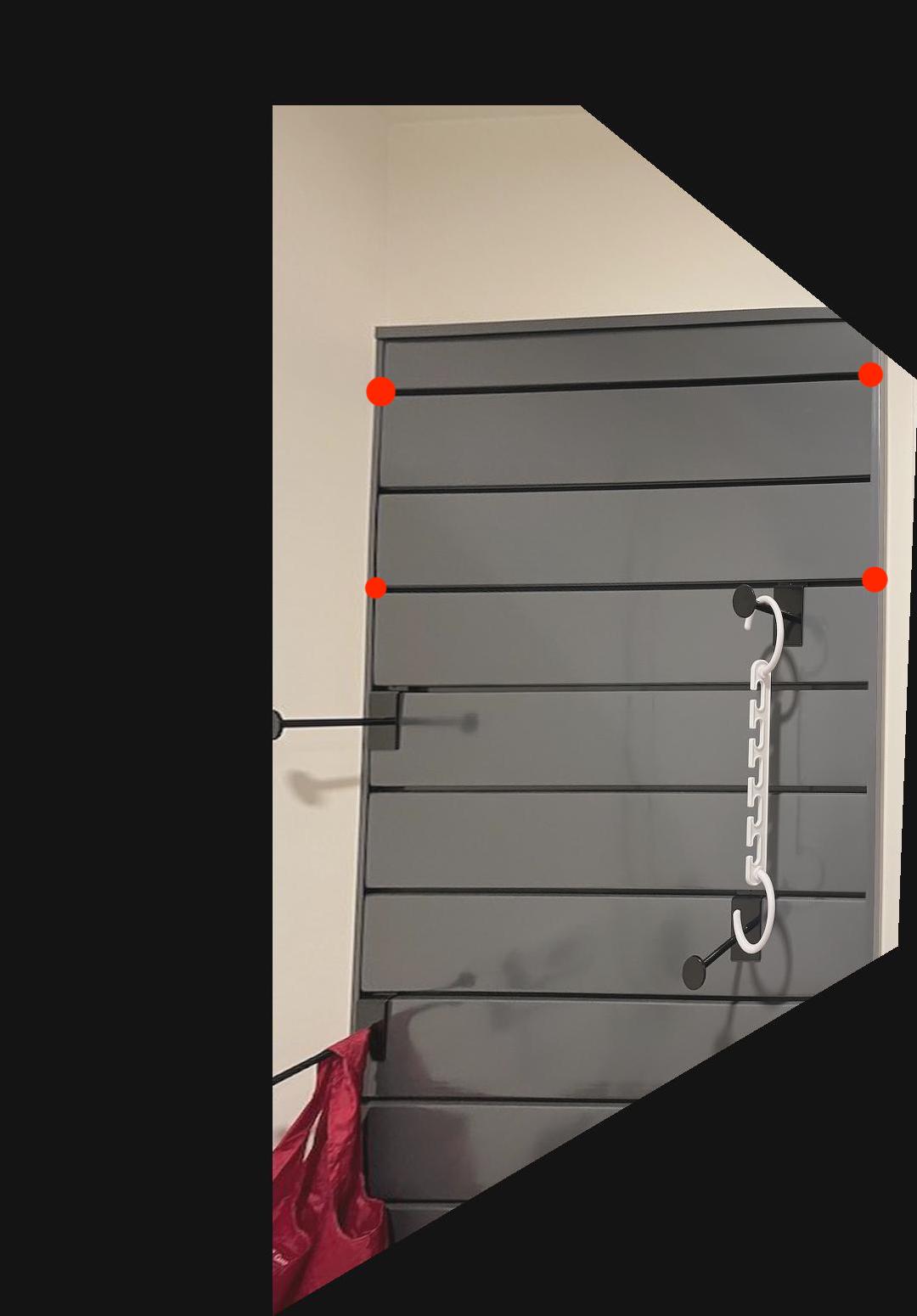 Rectified parallel lines
Rectified parallel lines
Mosaics
Lastly, I combined what I did above, and stitched images together. I used an weighted average at the points where the images overlap. Each mosaic has 10 keypoints chosen.
 Left of the bench
Left of the bench
 Right of the bench
Right of the bench
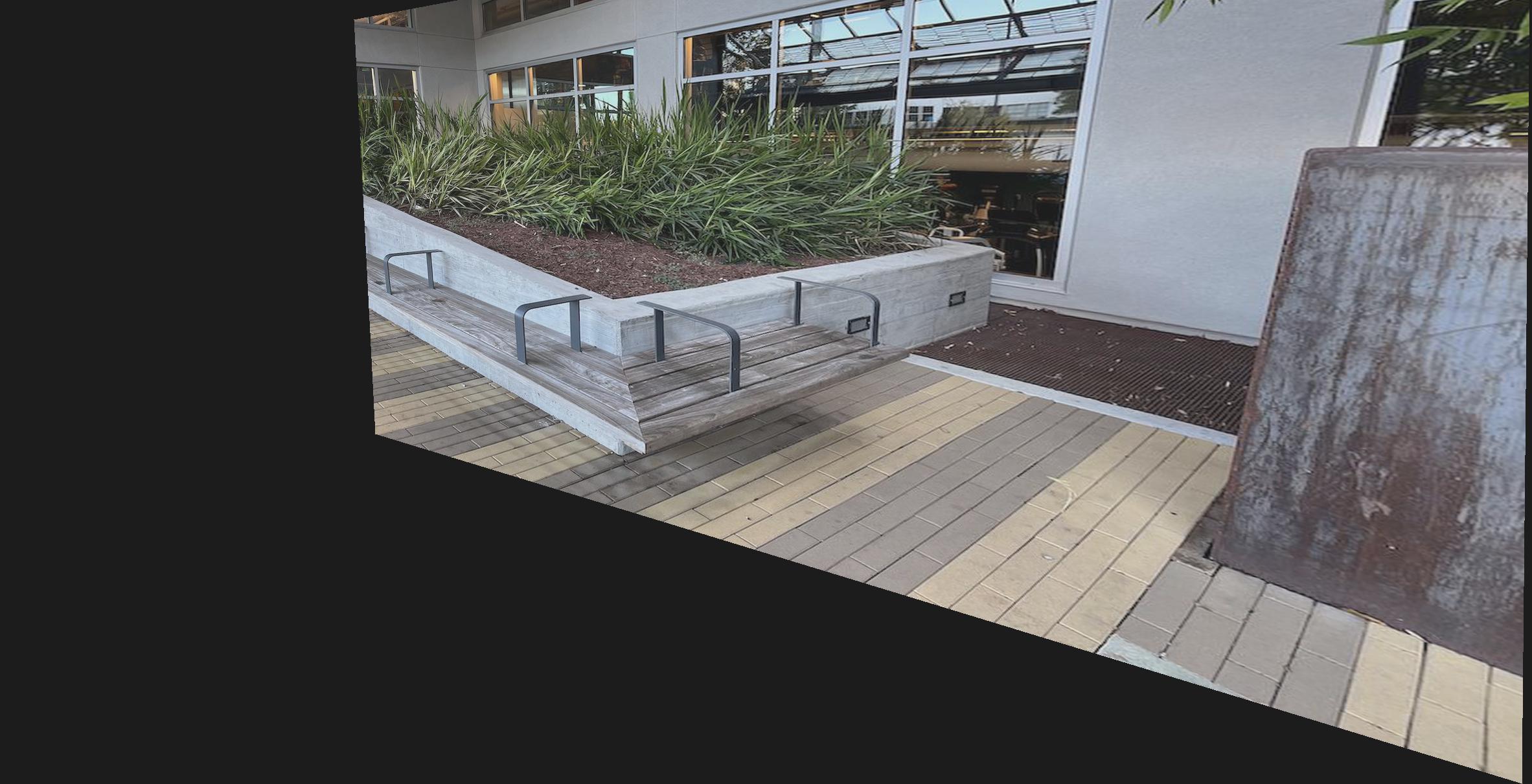 Warped right of the bench
Warped right of the bench
 Stitched bench
Stitched bench
 Left of the courtyard
Left of the courtyard
 Right of the courtyard
Right of the courtyard
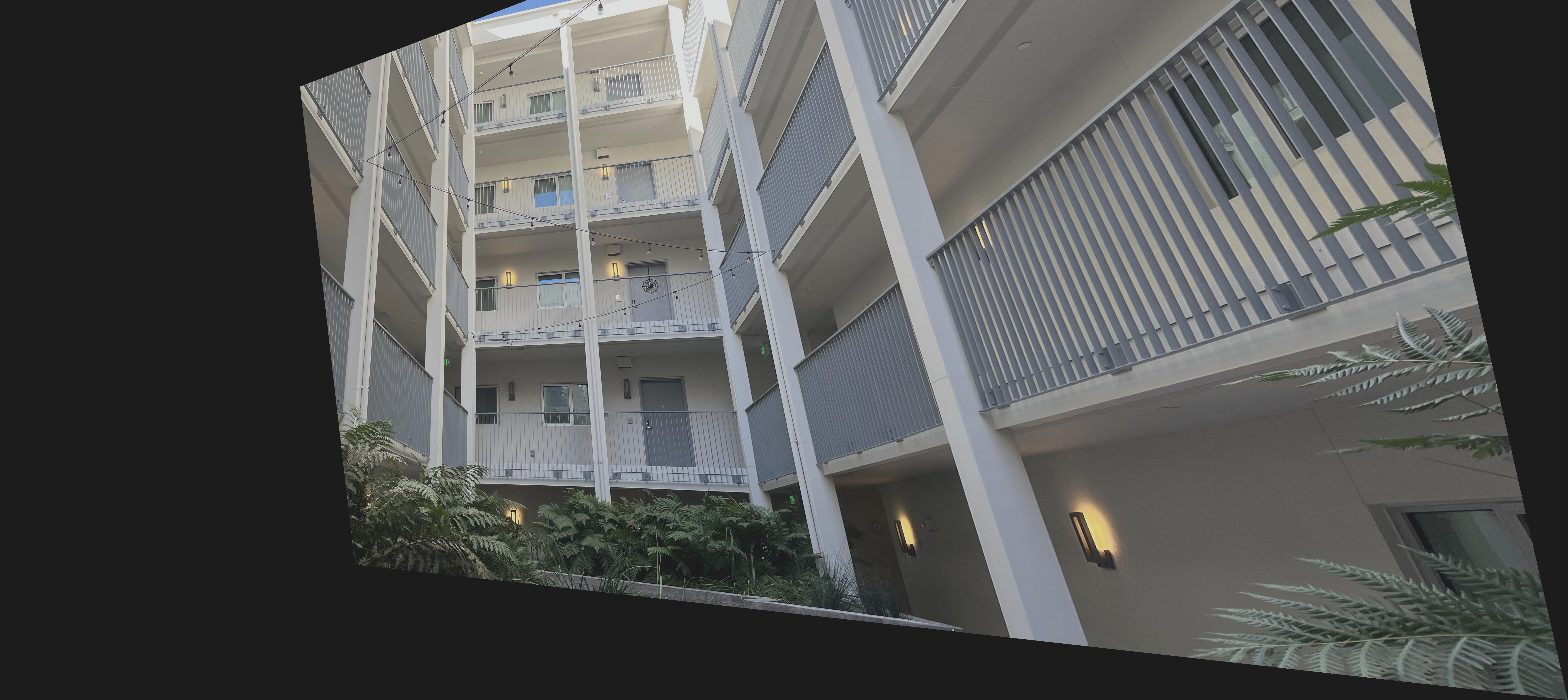 Warped right of the courtyard
Warped right of the courtyard
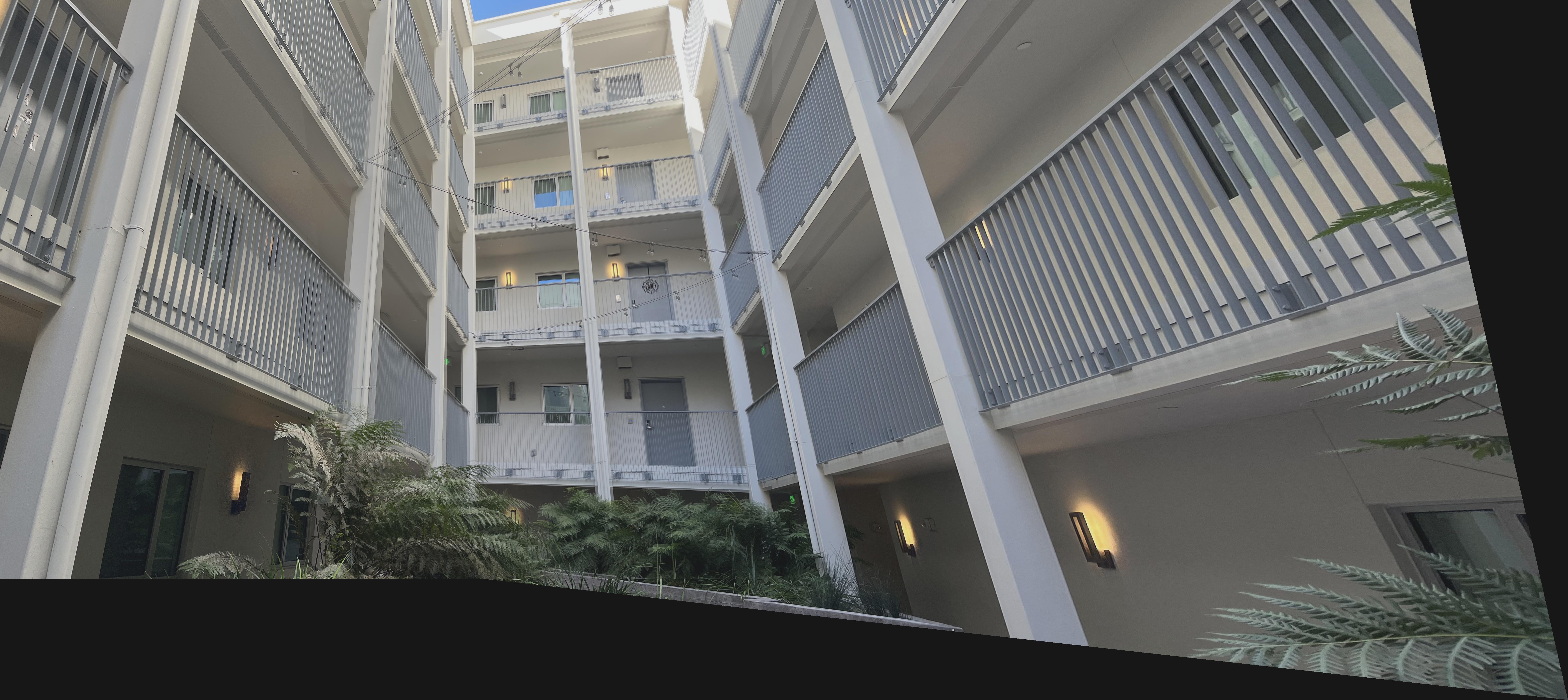 Stitched courtyard
Stitched courtyard
 Left of the shelf
Left of the shelf
 Right of the shelf
Right of the shelf
 Warped right of the shelf
Warped right of the shelf
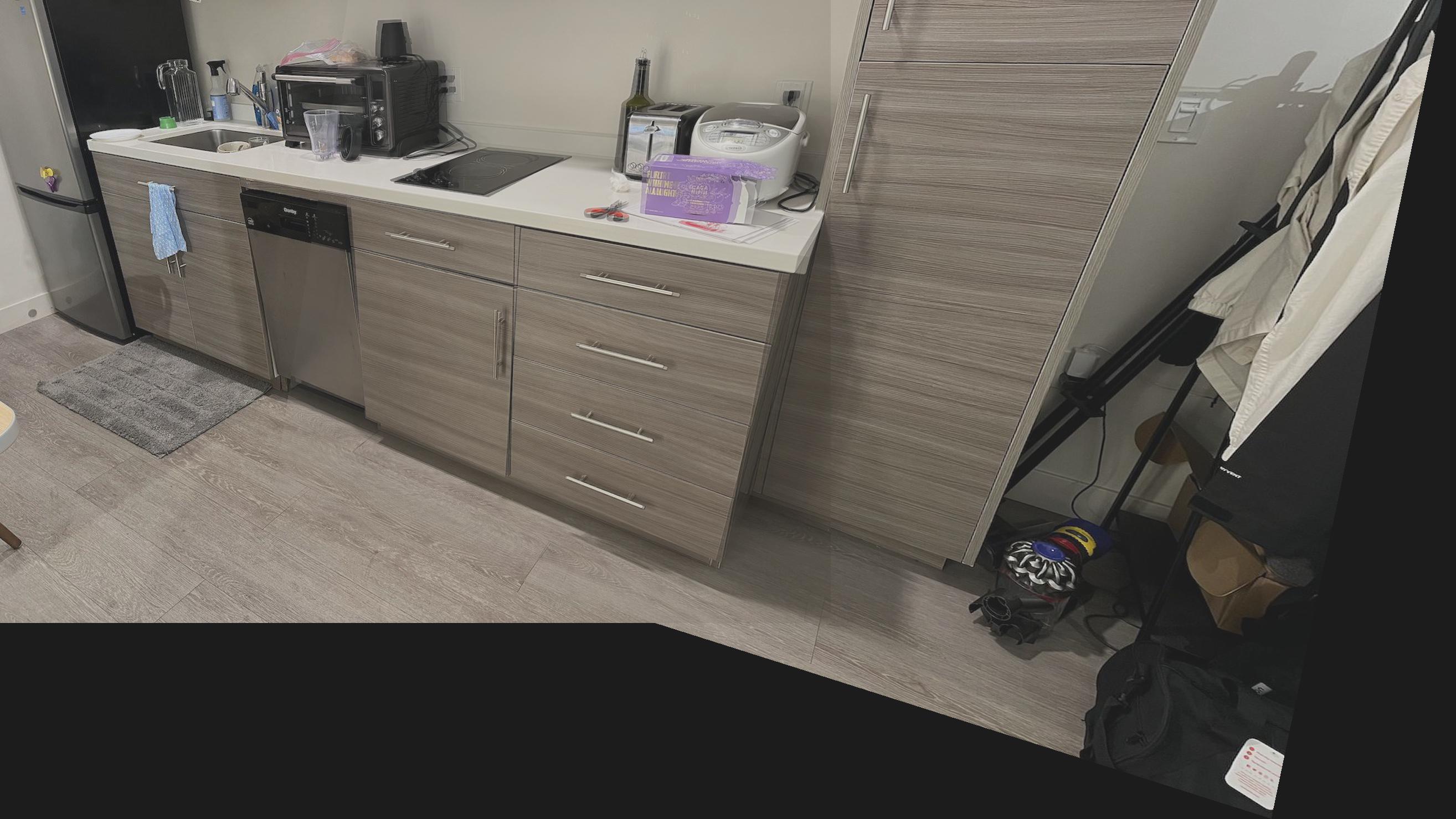 Stitched shelf
Stitched shelf
What did I learn
The first thing I noticed is that the warping isn't exact --- its edges are pretty clear, and not all pixels are lined up well. This is probably because hand-picked points are optimal because of their low precision. An automated keypoint detection would be key to the success of a mosaic. The warping and stitching is really cool though, because through a simple transformation matrix, we can get view of an item from a different angle using the same image.





























